The man who dresses up as his ancestors
- Published
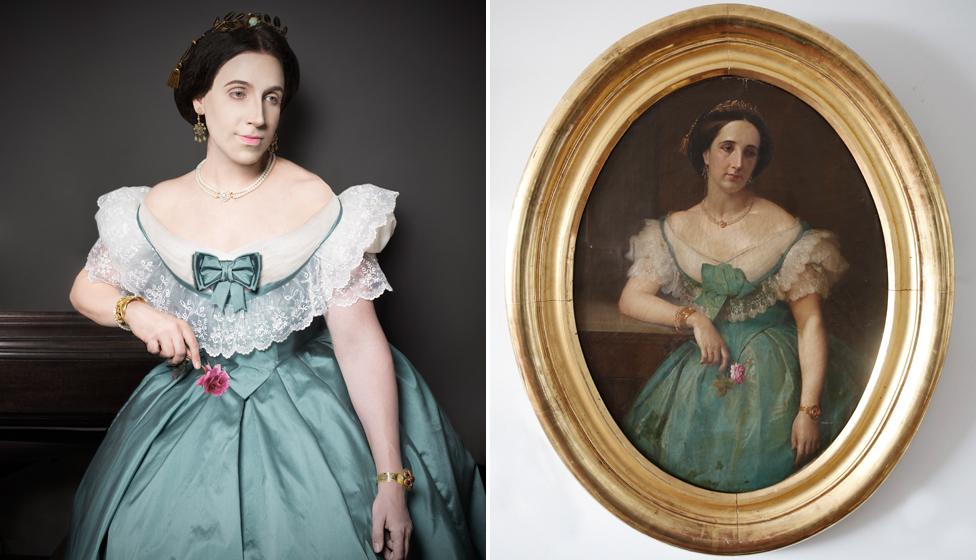
Peruvian artist and photographer Christian Fuchs is obsessed with his illustrious ancestors and spends months painstakingly recreating portraits of them, posing for them himself whether the ancestors were men or women.
It's an unusual way to get close to your forefathers, but it works for Christian Fuchs.
The walls of his elegant apartment overlooking the Pacific Ocean in Lima's bohemian Barranco district are covered with paintings of his aristocratic European and Latin American ancestors.
But if you look closer, you soon realise that many of the portraits are, in fact, photographs of the 37-year-old himself, dressed up as his relatives.
It all started when Fuchs was 10 years old.
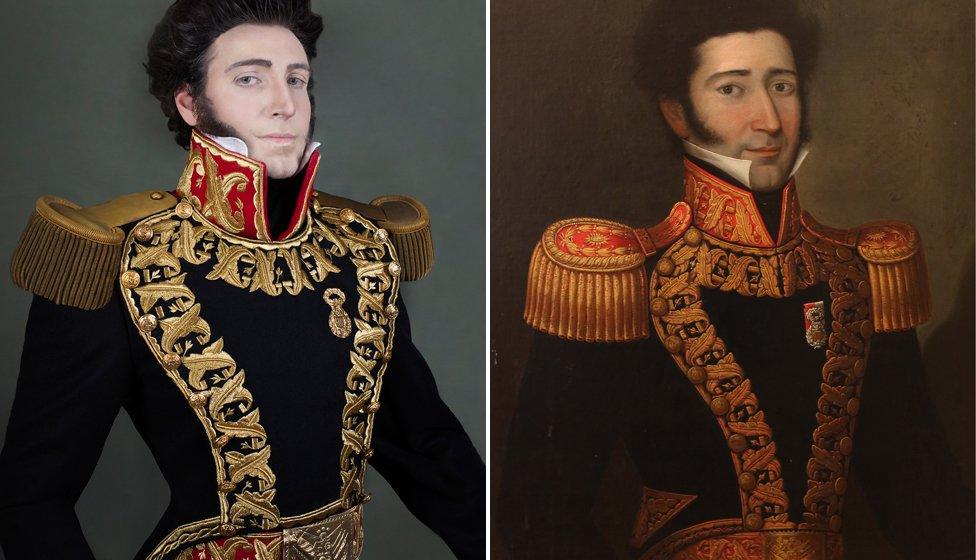
Fuchs's great-great-great-great-grandfather led a distinguished military career and participated in the Peruvian war of independence
His mother was diagnosed with schizophrenia and admitted to a psychiatric hospital, where she died five years later. His father left the family, remarried and disappeared.
Fuchs and his brother and sister were brought up by their paternal grandparents.
"I grew up with portraits and objects that had been in my family for up to five generations," he explains.
"As a child I looked at the portraits and played with them. If I didn't know the names of the characters, I invented them. I remember watching them for hours and feeling that they were watching me back. Sometimes I would talk to them, and eventually that led to my reinterpretations of them."
Fuchs's grandmother, Catalina del Carmen Silva Schilling, played a very important part in all of this. Born in Chile of German ancestors, she too was brought up by her grandparents.
"She would tell me stories about our relatives from Chile and Germany, and I learned to look at things through her eyes," Fuchs says.
"It was magical. She told me about relatives like my granny's great-grandmother, Marie Schencke, who also came from Germany. Her family brought electricity to the Chilean town, Osorno."
Years later Fuchs went to university to study law, but after a few months working as a lawyer he quit to become an artist and found himself once again gazing at the portraits.

Fuchs's great-great-great-great-grandmother, Luise Friederike Charlotte Eleonora Chee, was his first recreation
"I was looking at one of the family portraits from 1830 of Eleanora, my grandmother's great-great-grandmother" he says.
"I began to think, 'Considering we share the same genes, could I actually look like her?' That afternoon I went to the hairdresser and got them to put my hair up in ringlets. I thought it was a cool idea for a new project."
The process of reinterpreting his ancestors can take many months.
Fuchs reads their letters and talks to relatives about them. He takes photos of their portraits to a local tailor who tries to imitate the garments - some of which date back to the 18th Century - as faithfully as possible, and to a jeweller who creates replicas of the jewellery.
Dressing up as a woman can be especially problematic Fuchs says, and not only because he finds the corsets very uncomfortable.
"It's complicated because I have to wax," he says, "and I have tons of hair."
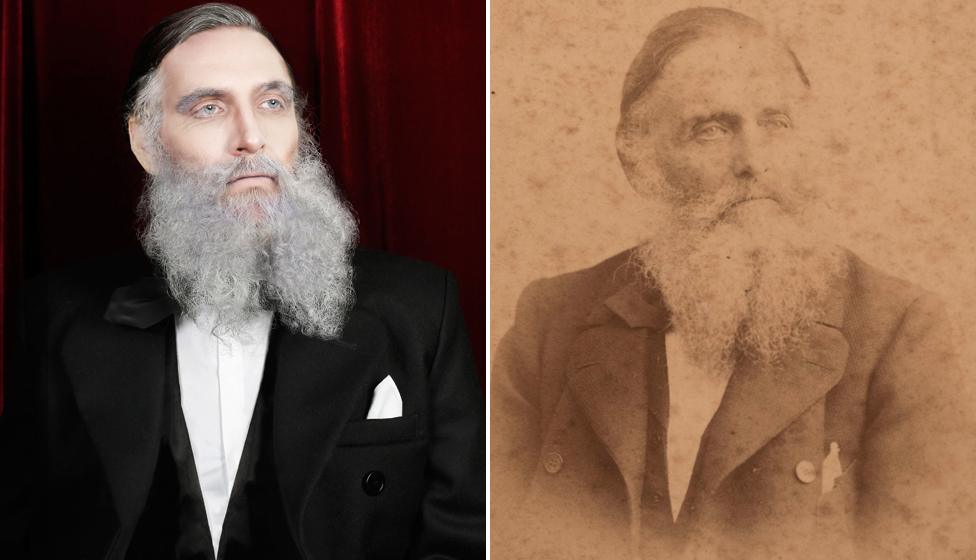
It took Fuchs's great-great-grandfather Carl Schilling three months to sail from Germany to Chile. He lived there until his death in 1923 aged 93
Making up his face can also take between three and five hours, depending on the character.
Fuchs says that his most difficult project was recreating "the family's patriarch" Carl Schilling, his grandmother's great-grandfather, who arrived in Chile as a 19-year-old in 1850, on a boat full of German immigrants.
"He went down south to work as an estate manager for an aristocratic family called Buschmann and ended up marrying their daughter, Johanna," says Fuchs.
"Carl was a real character. He learned the native language so he could talk to the indigenous Mapuche people, and he was one of the founders of the German school in Osorno - one of the oldest German schools in the world."
To become his great-great-great-grandfather Fuchs had to grow a beard. It was slow work - taking more than a year - and when it was finally long enough to be dyed white he had a severe allergic reaction to the chemicals.
But Fuchs says that he knew the transformation had been a success when on a trip to the bank he was asked if he wanted to join the special queue for elderly people.
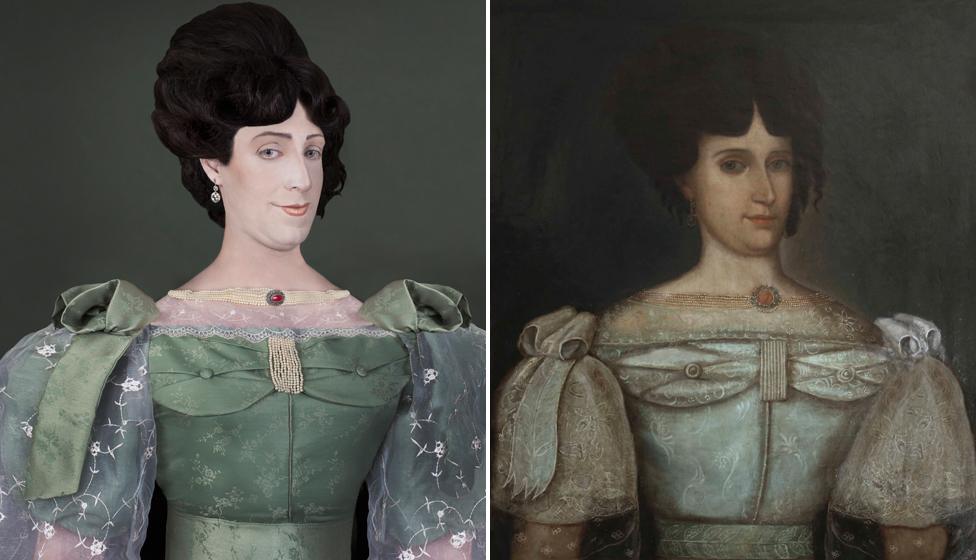
Fuchs's great-great-great-great-grandmother Dona Natividad Martinez de Pinillos Cacho y Lavalle. Her brother-in-law was President of Peru, Luis Jose de Orbegoso
Although the finished works look very much like paintings they are, in fact, digital photographs taken under very bright lighting, which makes Fuchs's made-up skin appear very pale, almost like porcelain.
The photographs are then printed on matt, cotton paper and, as a final touch, Fuchs displays them in frames which are appropriate to the period in which the person he is recreating lived.
He exhibits and sells his recreations to art collectors around the world, but for him the project is primarily a means to help him connect with his past.
"At first my family thought I was strange," Fuchs says, "but now they really like the pieces and want to find out more about their relatives."
See how Fuchs is able to transform himself into his ancestors
Fuchs is currently working on transforming himself into his great-great-great-great-great-great-aunt, Dorothea Viehmann, who was born in Kassel, Germany, in 1755.
The daughter of an innkeeper, she heard many tales from the guests at her father's tavern. The Priest of the Huguenot church introduced Viehmann to the Brothers Grimm, and with that her work as a muse began.
Most of Viehmann's tales were subsequently published in the second volume of the Brothers Grimm Fairy Tales.
To achieve a good likeness, make-up artist Juan Diego Peschiera painstakingly applies layer upon layer of liquid latex to Fuchs's face.
"The eyes are the most difficult part of the face to do," he explains.
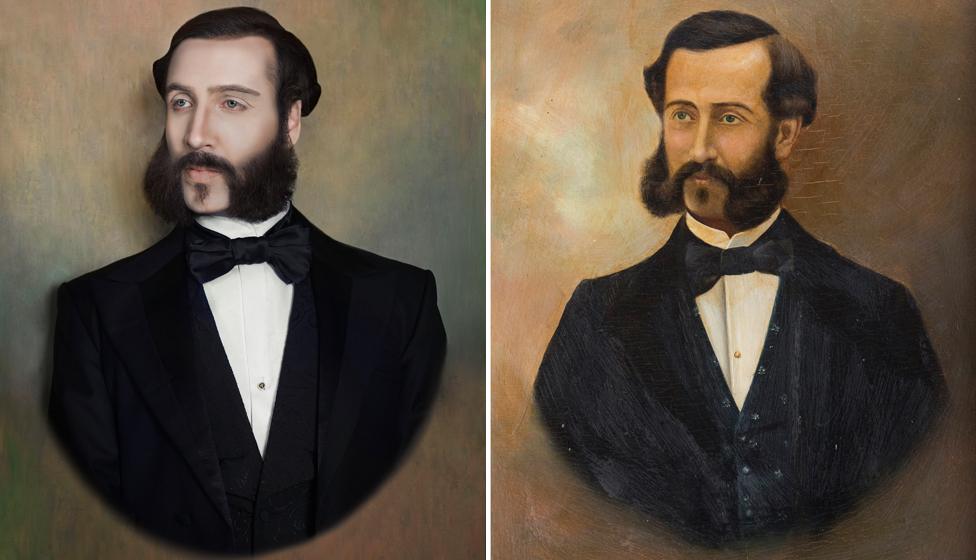
Fuchs's great-great-great-grandfather Eulogio Elespuru y Martinez de Pinillos lived in Paris for many years
"Wrinkles go in different directions, so we have to make the latex go in different directions to create that effect. If we do it in just one layer it looks fake, so we need to build up lots of different layers. At first I apply alcohol-based make-up and then the liquid latex, it's translucent and you can see all the different capillaries under the skin."
Fuchs has recreated 11 ancestral portraits so far and has many more in mind, including Queen Elizabeth I, Mary Queen of Scots, and William Shakespeare. Fuchs believes they are all distantly related to him and plans to confirm that using a genetic genealogy website.
But there is one very special person he would particularly like to transform himself into, his grandmother, Catalina del Carmen.
Carmen, who was like a mother to Fuchs, died just after Christmas and he is still grieving.
"It will be really hard to do her justice," he says, "she was so pretty and had a much smaller nose than me, but I definitely want to try."
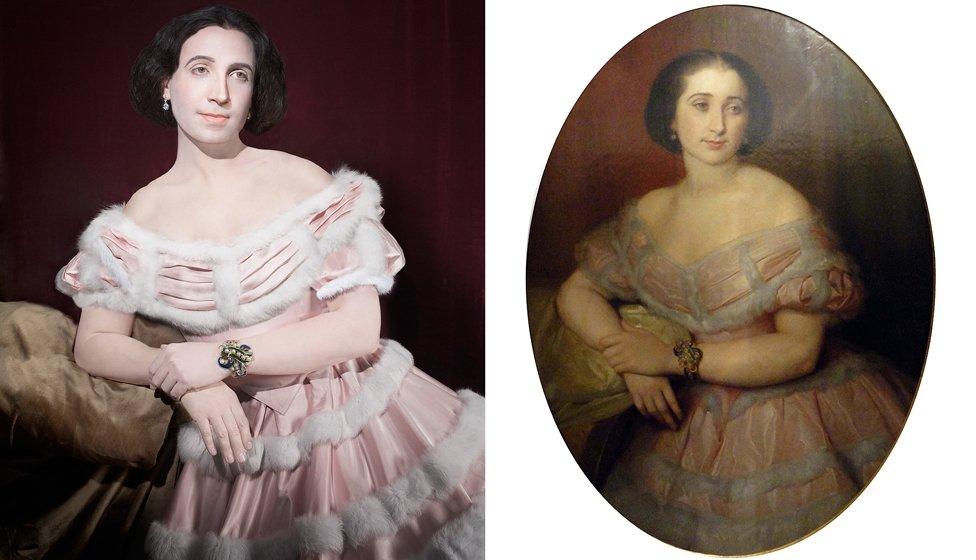
Fuchs's great-great-great-aunt Benjamina was friends with many famous poets and authors, including novelist and diplomat Alberto Blest Gana
All images courtesy of Christian Fuchs unless otherwise indicated
Listen to Christian Fuchs speaking to Outlook on the BBC World Service
Join the conversation - find us on Facebook, external, Instagram, external, Snapchat , externaland Twitter, external.